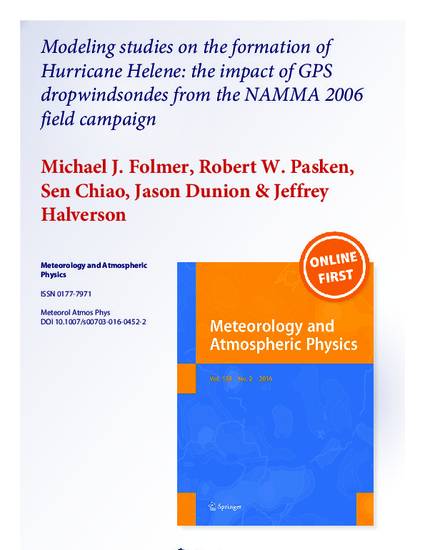
Article
Modeling studies on the formation of Hurricane Helene: the impact of GPS dropwindsondes from the NAMMA 2006 field campaign
Meteorology and Atmospheric Physics
(2016)
Abstract
Numerical simulations, using the weather research and forecasting (WRF) model in concert with GPS dropwindsondes released during the NASA African Monsoon Multidisciplinary Analyses 2006 Field Campaign, were conducted to provide additional insight on SAL-TC interaction. Using NCEP Final analysis datasets to initialize the WRF, a sensitivity test was performed on the assimilated (i.e., observation nudging) GPS dropwindsondes to understand the effects of individual variables (i.e., moisture, temperature, and winds) on the simulation and determine the extent of improvement when compared to available observations. The results suggested that GPS dropwindsonde temperature data provided the most significant difference in the simulated storm organization, storm strength, and synoptic environment, but all of the variables assimilated at the same time give a more representative mesoscale and synoptic picture.
Publication Date
December, 2016
DOI
10.1007/s00703-016-0452-2
Publisher Statement
SJSU users: use the following link to login and access the article via SJSU databases.
Citation Information
Michael J. Folmer, Robert W. Pasken, Sen Chiao, Jason Dunion, et al.. "Modeling studies on the formation of Hurricane Helene: the impact of GPS dropwindsondes from the NAMMA 2006 field campaign" Meteorology and Atmospheric Physics Vol. 128 Iss. 6 (2016) p. 733 - 750 ISSN: 0177-7971 Available at: http://works.bepress.com/sen_chiao/32/
